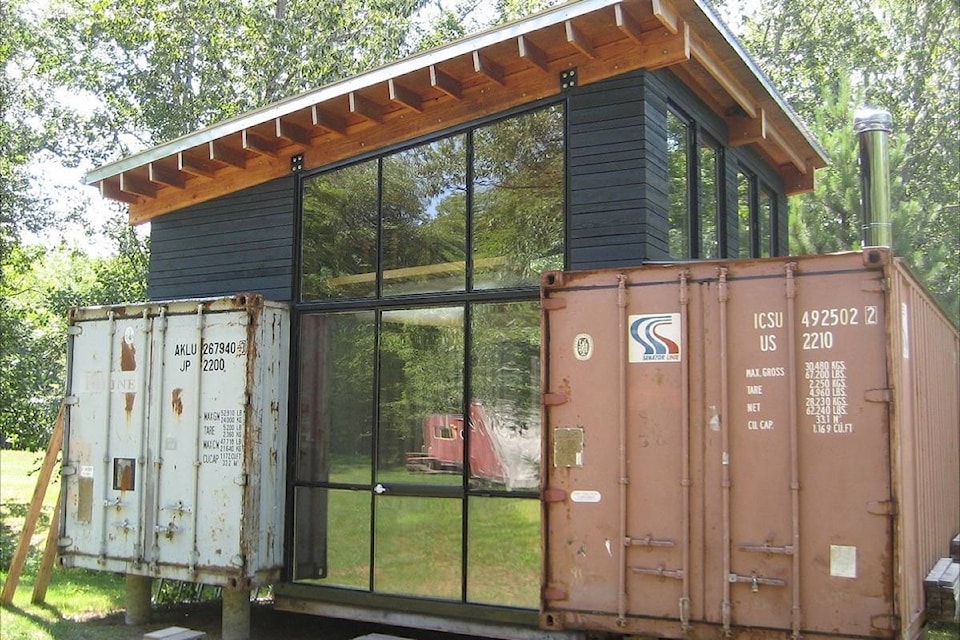Reusing shipping containers for workplace or residential storage can create unseen risks to workers and the public. A new video from WorkSafeBC (view it at http://bit.ly/2EYiIFw) and a safety bulletin ( http://bit.ly/2FGA3jk) outline these hazards, and show how to reduce risks.
Ashcroft Volunteer Fire Department chief Josh White says that risk mitigation, when it comes to shipping containers, is key, and that means proper ventilation.
“They have a small vent in the corner at one end in case someone gets trapped inside, but it’s very minimal ventilation, and not enough if you have gas vapours,” he says. “If you have fuel venting off then fumes will build up, and the container can auto-ignite.”
Vapours or gases from common flammable or combustible substances, when combined with an ignition source in a container with little or no ventilation, can produce a catastrophic incident. A leak of just one kilogram of propane, for example, can rupture a closed shipping container; the propane tank on an average home barbecue holds nine kilograms. A full tank can generate the same explosive force as 100 kilograms of TNT.
“Shipping containers are being repurposed all over B.C.”, says Dan Strand, Director of Prevention Field Services for WorkSafeBC. “The containers are designed to be watertight, which means they are well sealed with little or no ventilation: ideal for shipping, but potentially dangerous for other uses.”
In Saanich in 2013, a propane barbecue stored inside a shipping container caused an explosion that blew one of its 113-kilogram doors 40 metres, into a public park. (A video, viewable at http://bit.ly/2HTX4A0, illustrates the chain of events.)
In a tragic 2011 incident, a volunteer firefighter was struck and killed by a door that blew off a shipping container that was beside a structure that had caught fire. Afterward, investigators found that the container was being used to house a collection of gas-powered tools. When the fuel vapour was exposed to extreme heat, the container exploded. A video describing the event can be viewed at http://bit.ly/2FmlJir.
“In that incident a very small amount of fuel resulted in a tragedy,” says White. “Shipping containers themselves won’t usually catch fire, but if there is radiant heat from a nearby structure that’s on fire, that radiant heat saturates the shipping container, and it can auto-ignite. It will blow apart at the weakest point, which is usually the doors.”
White says that everything from bullets to propane tanks can be stored inside these containers, and that if they are in close proximity to a fire there is danger. “Keep them away from other buildings, and mitigate the fuel load around them. Don’t stack a woodpile beside it.” He adds that he recently saw a shipping container locally that had propane and fuel tanks stored inside it, and wood stacked beside it.
Used safely, shipping containers can be repurposed as storage compartments, office spaces, electrical rooms, welding and painting operations, and even living spaces. However, owners should conduct a risk assessment, including whether any flammable/combustible products are being stored in a container.
If so, move them to a well-ventilated location if possible; if storing combustible items in a container is unavoidable, modify the container by improving ventilation, then remove any possible sources of heat or ignition. White says that if you have a 40-foot container, put whirligig vents in every 20 feet, and ensure there is proper ventilation at the bottom of the container to encourage air flow.
Owners should list the contents of their container(s) in a fire-safety plan so first responders know the potential hazards, and find out if the floor has been contaminated with toxic chemicals.
“We just don’t know what’s inside them,” says White. “If we see a shipping container near a fire we will cut the locks off and get the doors open. We have to know what’s inside.”
editorial@accjournal.ca
Like us on Facebook and follow us on Twitter
